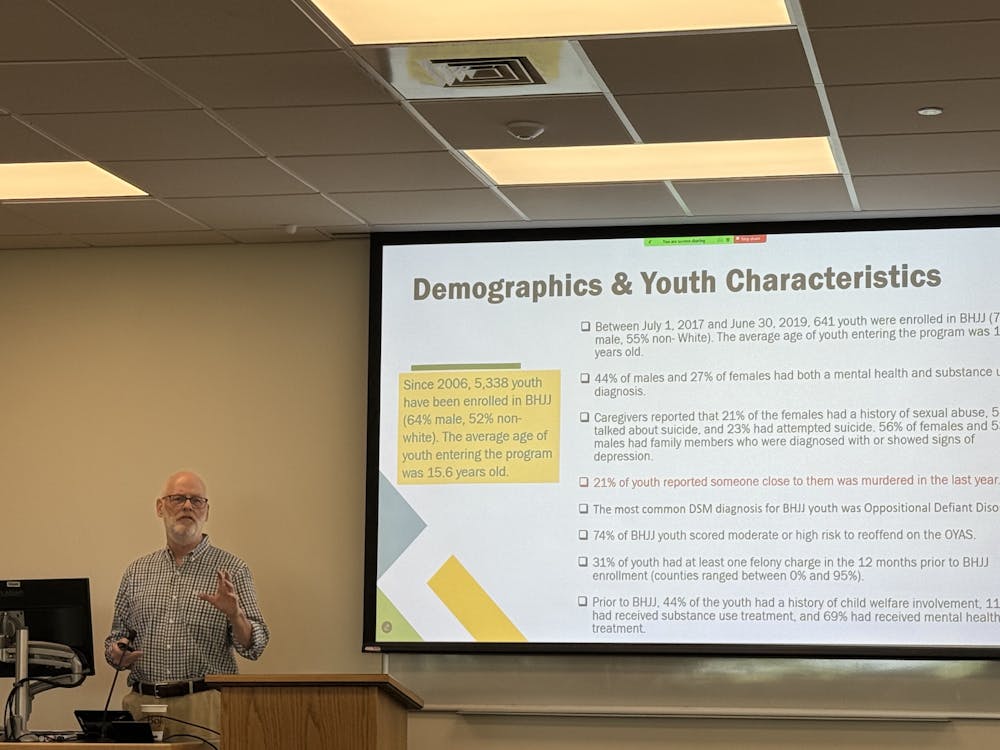Director of Energy and Utilities Paul Zmick discussed the University’s strategic thermal energy study in a virtual event hosted by the Energy Working Group Tuesday. Attended by approximately 25 participants, the event explored how the University can reduce its usage of fossil fuels nad decrease carbon dependence in heating on Grounds.
Zmick said that for the current study, researchers and engineers from the Energy and Utilities Department have worked with consultants to begin the process of making wide-reaching decisions about the University’s future with regard to sustainability and decarbonization.
“At this point we haven’t made decisions, we’ve just built a decision-making framework or established things to consider and look at and we also calculated what the carbon reduction would look like over time,” Zmick said.
Part of the University’s broad sustainability goals includes being carbon neutral by 2030 and phasing out fossil fuels completely by 2050. Currently, about 20 percent of the University's energy comes from renewable sources — including solar installations — on Grounds. The University also aims to eliminate single-use plastics by 2025, which will be replaced with compostable, reusable or recyclable materials.
Student activism has also played an important role in encouraging the University to adopt more sustainable practices. DivestUVA is an organization that has been advocating for the University’s disclosure of investments in fossil fuel companies and divestiture from those industries. Most recently, the group held a rally in December.
According to Zmick, the process of creating the study began by determining guiding principles and stakeholder groups. Energy and Utilities had to establish the current energy footprint of the facilities to understand what energy consumption may look like in the future, taking into account potential constraints such as limitations on natural gas or electricity.
The study features three potential scenarios for phasing out fossil fuels. The first scenario involves phasing out fossil fuel-based steam in every area of the University — with the exception of the U.Va. Health, which depends on steam to sterilize some medical equipment and biohazards — and moving to a different technology that would produce steam with renewable energy. Fossil fuel-based steam is a technique for generating electricity in which high-pressure steam rotates a turbine.
The second scenario is a total steam phaseout, which would see the entire University — including the Medical Center and hospital — phasing out steam by 2040. In the first two plans, the natural gas used for heat production would be eliminated by 2050 and replaced with renewable natural gas or potential future technologies such as green hydrogen — hydrogen created through a process powered by renewable resources.
The third scenario is a total electrification, which means that the University would phase out steam by 2040 and replace it with electrical sources — such as solar cells or wind turbines. Ideally, the University would phase out all fuel use by 2050.
For Zmick, one potential concern with the third option is the need for a firm fuel source. A firm fuel source is any type of fuel that can be stored on Grounds or accessed at any point if needed — electricity is not a firm fuel source. In the case of a total electrification, the University would still need access to a firm fuel, such as coal and oil.
“If we fully electrify and we lose electricity, I have to have a firm energy source and the availability to dispatch that in order to maintain peace in the buildings,” Zmick said. “We have over 640 hospital beds, we have critical research and various animals, we have residential students in the middle of winter — if we lose power we need to keep heating spaces.”
Next steps of the plan include analyzing the risks of all three potential scenarios, reviewing the priorities of the plan, looking into potential alternatives to steam for research and clinical buildings and exploring geoexchange. Geoexchange is a process similar to that used in obtaining geothermal energy in which underground pipes allow heat to be transferred from the ground in winter and back into the ground in summer.
All three scenarios call for two of the three coal boilers to be converted to gas and biodiesel. Zmick hopes that the conversion can be completed in the next three to five years. This is expected to cost $36 million.
Zmick also went into detail about the University’s current use of energy and fossil fuels. Currently, the majority of fossil fuels go towards heating buildings — this includes 143,533 MMBTU of coal at the main heat plant and 851,770 MMBTU of natural gas. The University currently uses over one million metric million British thermal units of energy at its main plants. Usage of fossil fuels at the University has decreased from around 1,425,000 MMBTU in 2015 to approximately 1,140,000 MMBTU in 2020.
The primary goal of the study is to reduce the usage of coal as a source of energy in the heating and chilled water plants — when burned, coal reacts with oxygen in the air to produce carbon dioxide, which in turn traps heat in the atmosphere.
“We’ve been trying to minimize the use of coal [in plants] with a target of 25 percent or less of the total heat input for the main plant for the year and in 2020 we had an all-time low of 15 percent due to favorable weather and lower demand and coal availability issues,” Zmick said.
Zmick also addressed some new energy technologies that Energy and Utilities is employing, such as a project to use low-temperature hot water and heat recovery chillers. This technology would allow the water to be heated by the same equipment used to make chilled water.
Zmick concluded the presentation by addressing the types of technologies the Energy and Utilities department and consultants are looking into to replace coal.
“As we continue to work on demonstrating some engageable loads between buildings and plants, we look for alternatives for steam… we demonstrate… a different way to humidify and not use steam, we work on airflow setbacks in both buildings and laboratories,” Zmick said. “It’s a no-brainer — get off of coal.”
Following the presentation, the participants split into breakout groups for a brief discussion of the plan and to ask any questions they had during the presentation. During breakout rooms, participants had the opportunity to anonymously post their questions into a document. The participants then were brought back into the main room, where Zmick responded to some questions.







